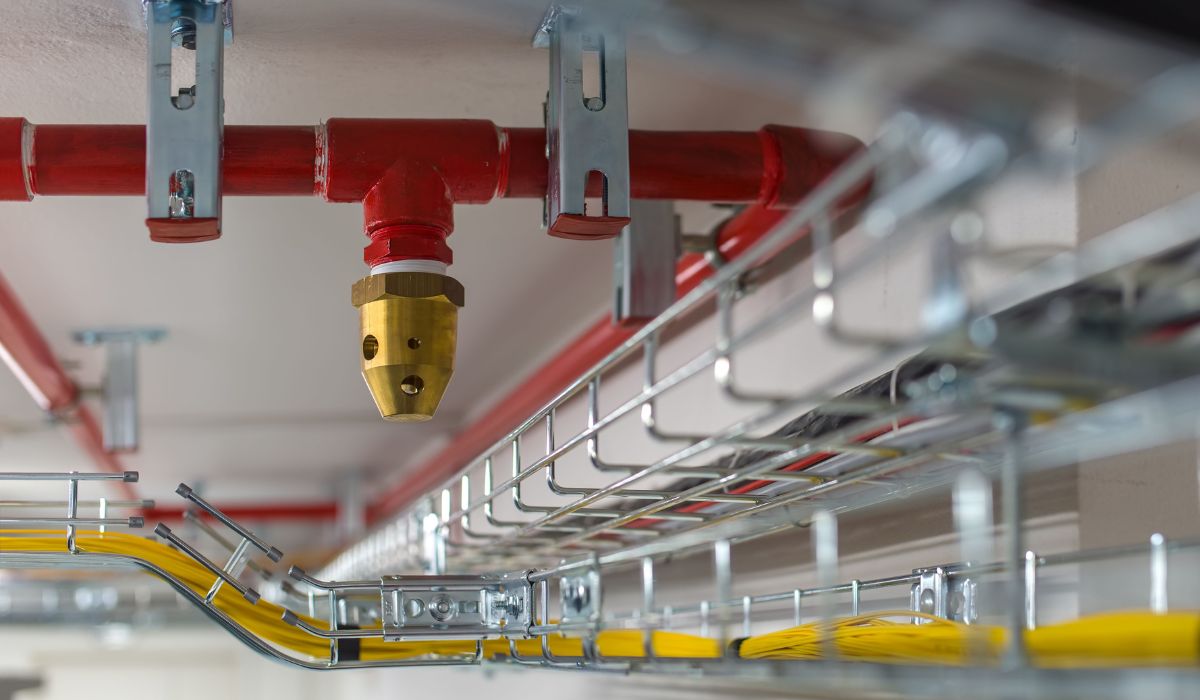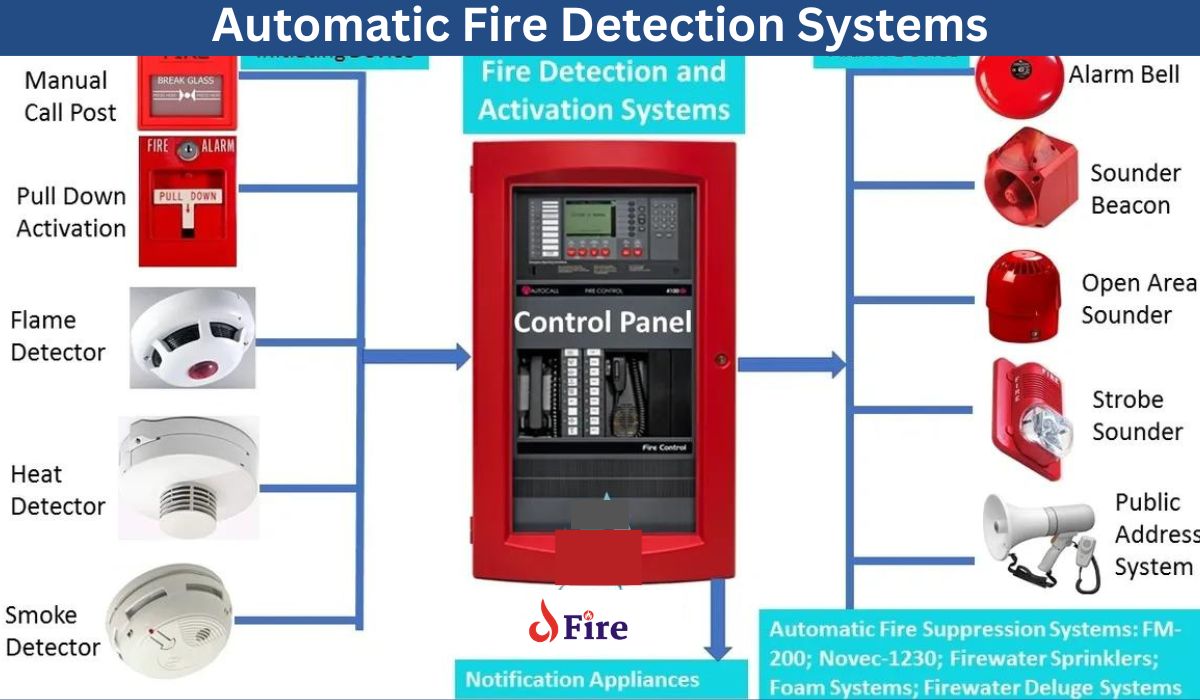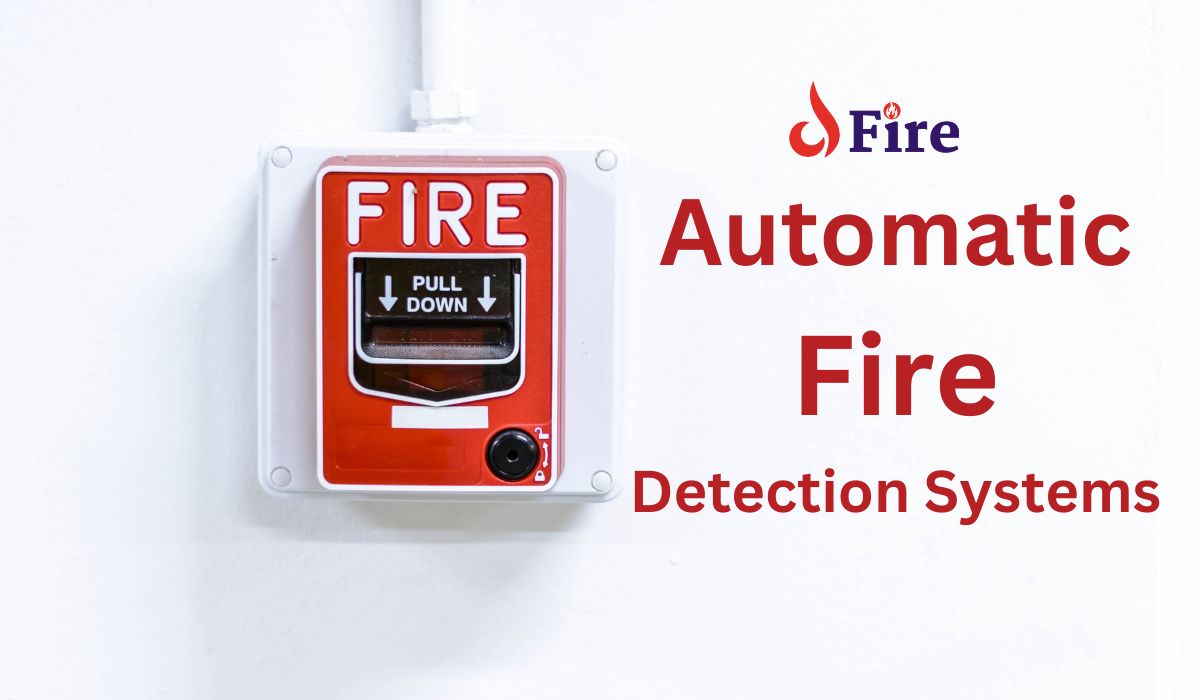Fire is a pervasive threat that can cause immense damage to property and pose significant risks to human life. In the face of such potential devastation, the importance of early detection cannot be overstated. Automatic fire detection systems serve as invaluable tools in this regard, offering swift and efficient means of identifying and alerting occupants to the presence of fire.
An automatic fire detection system is a crucial investment for safeguarding both your home and business. These systems rapidly detect smoke or heat, allowing for quick response and mitigating potential damage or loss. By alerting emergency services immediately, these systems can save lives and prevent devastating fires from spreading.
Additionally, having a reliable fire detection system can lower insurance premiums and provide peace of mind knowing that your property is protected around the clock. Overall, investing in an automatic fire detection system is a proactive measure that can help ensure the safety and security of your property.
How an Automatic Fire Detection System Can Safeguard Your Home and Business. Discover The peace of mind that comes with installing an automatic fire detection system in your home or business. Learn how this simple yet effective tool can keep your loved ones & investments safe from potential disasters.
Introduction to Automatic Fire Detection Systems

Definition and Purpose
Automatic fire detection systems are sophisticated networks of sensors and detectors designed to identify the presence of fire in its incipient stages. These systems employ various technologies to detect indicators of fire, such as smoke, heat, or flames, and initiate appropriate responses to mitigate the risk.
Importance of Early Fire Detection
The significance of early fire detection cannot be emphasized enough. By detecting fires in their nascent stages, automatic fire detection systems enable prompt action, allowing for swift evacuation procedures and timely intervention by firefighting personnel. This early detection can mean the difference between containing a fire quickly and witnessing its rapid escalation into a catastrophic event.
How Automatic Fire Detection Systems Work

Sensors and Detectors
Automatic fire detection systems utilize a combination of sensors and detectors to monitor different aspects of the environment for signs of fire. Smoke detectors, for example, employ optical or ionization sensors to detect the presence of smoke particles in the air. Heat detectors, on the other hand, are designed to respond to increases in temperature beyond predefined thresholds. Additionally, flame detectors utilize specialized sensors capable of identifying the unique signatures of flames.
Communication and Alert Mechanisms
Upon detecting the presence of fire, automatic fire detection systems initiate a series of predefined actions to alert occupants and authorities. These actions may include activating audible and visual alarms, transmitting alerts to monitoring stations or emergency services, and triggering suppression systems such as sprinklers or gas-based extinguishing agents. By promptly notifying relevant parties, these systems facilitate rapid response efforts, minimizing the potential impact of the fire.
Features of Automatic Fire Detection Systems
- 24/7 Monitoring
- Smoke & Heat Detection
- Integrated Alarm System
- Remote Notification Capability
- Emergency Response Coordination
Types of Automatic Fire Detection Systems
Automatic fire detection systems are crucial for identifying and alerting individuals about fires in various environments. There are several types of automatic fire detection systems, each with its characteristics and applications. Here are some common types:
Smoke Detectors:
Ionization Smoke Detectors: These detectors contain a small amount of radioactive material that ionizes the air between two electrically charged plates. Smoke entering the chamber disrupts the ion flow, triggering the alarm.
Photoelectric Smoke Detectors: These detectors use a light source and a photocell. When smoke enters the chamber, it scatters the light onto the photocell, triggering the alarm.
Aspirating Smoke Detectors: Also known as air-sampling smoke detectors, these systems actively draw air into a detection chamber, where it is analyzed for smoke particles. They are highly sensitive and suitable for early detection in sensitive environments.
Heat Detectors:
Fixed Temperature Heat Detectors: These detectors trigger an alarm when the surrounding temperature reaches a preset threshold.
Rate-of-Rise Heat Detectors: These detectors activate when the temperature rises at a rate exceeding a predetermined value within a specific period.
Flame Detectors:
UV/IR Flame Detectors: These detectors combine ultraviolet (UV) and infrared (IR) sensors to detect flames by analyzing their characteristic radiation signatures.
IR Flame Detectors: These detectors primarily use infrared sensors to detect the unique radiation emitted by flames.
UV Flame Detectors: These detectors rely solely on ultraviolet sensors to detect the UV radiation produced by flames.
Gas Detectors:
Combustible Gas Detectors: These detectors sense the presence of combustible gases such as methane, propane, or hydrogen, triggering an alarm when gas concentrations exceed predefined levels.
Carbon Monoxide (CO) Detectors: These detectors monitor carbon monoxide levels in the air, triggering an alarm when concentrations surpass safe thresholds.
Linear Heat Detection Systems (LHD):
LHD systems consist of a heat-sensitive cable or wire that detects temperature changes along its length. They are often used in areas where traditional spot-type detectors are impractical, such as conveyor belts or cable trays.
Video Smoke Detection (VSD) Systems:

VSD systems use video cameras and specialized algorithms to detect smoke or flames based on changes in visual images. They are particularly useful in large spaces or outdoor environments where traditional detectors may not be effective.
Multi-Sensor Detectors:
These detectors combine multiple detection technologies (e.g., smoke, heat, and/or carbon monoxide sensors) to improve detection reliability and reduce false alarms.
Each type of automatic fire detection system has its advantages and limitations, and the choice of system depends on factors such as the environment, the type of fire hazards present, and the desired level of sensitivity and reliability.
Benefits of Installing an Automatic Fire Detection System
Installing an automatic fire detection system can provide numerous benefits for homeowners & business owners alike. These systems offer peace of mind by providing early warning of potential risks & ensuring swift action in The event of a fire.
Swift Response Time
One of the primary advantages of automatic fire detection systems is their ability to provide early warning of fire, enabling swift response measures. By detecting fires in their incipient stages, these systems afford occupants precious time to evacuate the premises safely and initiate firefighting efforts before the situation escalates.
Minimized Property Damage
Early detection and intervention facilitated by automatic fire detection systems can significantly reduce the extent of property damage caused by fires. By alerting authorities promptly, these systems facilitate the timely deployment of firefighting resources, limiting the spread of flames and minimizing the overall impact on structures and assets.
Enhanced Life Safety
Perhaps most importantly, automatic fire detection systems play a crucial role in safeguarding human life. By alerting occupants to the presence of fire at the earliest possible stage, these systems facilitate timely evacuation, ensuring that individuals can exit the premises safely and minimize the risk of injuries or fatalities.
Improved Safety Measures
By detecting fires quickly & accurately. Automatic fire detection systems help minimize The risk of injuries & fatalities. Early detection allows occupants To evacuate The premises safely & helps emergency responders take appropriate actions To contain The fire.
Furthermore. Having a fire detection system in place can also reduce property damage by alerting authorities promptly. Potentially saving valuable assets & minimizing financial losses.
Additionally. These systems can be integrated with other security measures. Such as sprinkler systems & emergency lighting. To enhance overall safety protocols & emergency preparedness.
Cost Effective Solution
While The initial investment in a fire detection system may seem significant, the long-term benefits far outweigh The costs. By preventing extensive fire damage & reducing The likelihood of insurance claims. These systems can ultimately save homeowners & business owners money in The event of a fire.
Moreover. Having a reliable fire detection system in place can also lead To lower insurance premiums. Insurance providers often offer discounts To properties equipped with advanced safety features.
Choosing The Right Automatic Fire Detection System
When selecting a fire detection system for your home or business. It is essential To consider factors such as The size of The property. The level of automation required, & any specific safety regulations that need To be followed. Consulting with a professional fire safety expert can help you determine The most suitable system for your needs.
| Feature | Quality | Quantity | Comparison with Others |
| 1. Detection Range | Long | Varies | Greater coverage area compared to traditional smoke detectors |
| 2. Response Time | Fast | Varies | Immediate alert to authorities in case of a fire |
| 3. Sensitivity | High | Varies | Detects even small traces of smoke or fire |
| 4. Reliability | High | Varies | Less prone to false alarms |
| 5. Installation Ease | Easy | Varies | The simple setup process for homeowners |
| 6. Maintenance | Low | Varies | Minimal upkeep required |
| 7. Monitoring Options | 24/7 | Varies | Constant surveillance for added security |
| 8. Connectivity | Wi-Fi or Cellular | Varies | Can be connected to smartphones for remote monitoring |
| 9. Integration | Smart Home Compatible | Varies | Can be integrated with other smart home devices |
| 10. Alerts | Notifications | Varies | Instant alerts sent to homeowners and authorities |
| 11. Cost | Reasonable | Varies | Competitive pricing compared to traditional systems |
| 12. Design | Sleek | Varies | Modern and aesthetically pleasing |
| 13. Zoning | Multiple Zones | Varies | Ability to detect specific areas in a building |
| 14. Battery Backup | Long Lasting | Varies | Continued protection during power outages |
| 15. False Alarm Prevention | Advanced Technology | Varies | Reduces the likelihood of false alarms |
| 16. Certification | NFPA Approved | Varies | Compliance with industry standards for safety |
| 17. Remote Access | Mobile App | Varies | Allows users to monitor the system from anywhere |
| 18. User-Friendly Interface | Intuitive | Varies | Easy navigation and control for users |
| 19. Customization Options | Flexible | Varies | Can be tailored to the specific needs of the user |
| 20. Emergency Response Coordination | Efficient | Varies | Swift coordination with emergency services in case of fire |
Comparison of Automatic Fire Detection Systems
| Feature | Basic System | Advanced System |
| Detection Technology | Smoke or Heat | MultiCriteria |
| Response Time | Varies | Rapid |
| Monitoring Services | No | Yes |
| Cost | Affordable | Higher Investment |
When considering an automatic fire detection system. It is essential To evaluate The features & capabilities of different systems To determine which option best meets your needs.
Installation and Maintenance of Automatic Fire Detection Systems
Proper Placement
The effectiveness of automatic fire detection systems depends largely on their proper placement within the monitored environment. During installation, careful consideration must be given to factors such as the layout of the space, the presence of potential fire hazards, and the characteristics of the detection technology employed. By strategically positioning sensors and detectors, system designers can maximize coverage and ensure comprehensive fire detection capabilities.
Regular Testing and Inspection
To maintain optimal performance, automatic fire detection systems require regular testing and inspection. Routine testing procedures should encompass functional checks of individual components, verification of communication protocols, and assessment of system responsiveness to simulated fire events. Additionally, periodic inspections by qualified technicians are essential to identify and address any potential issues or deficiencies promptly.
Overall. Investing in an automatic fire detection system for your home or business is a crucial step in enhancing safety & protecting your property from The devastating effects of fires. By choosing The right system & prioritizing regular maintenance & testing. You can have peace of mind knowing that you have taken proactive measures To safeguard your loved ones & assets.
FAQs About Automatic Fire Detection Systems
How effective are automatic fire detection systems at safeguarding my home & business?
An automatic fire detection system can greatly increase The safety of your home & business by quickly detecting The presence of a fire & alerting occupants before it grows out of control. This early detection can save lives & minimize property damage.
What types of automatic fire detection systems are available for residential & commercial use?
There are several types of automatic fire detection systems available. Including smoke detectors. Heat detectors. Flame detectors, & gas detectors. Each type of detector is designed To detect different aspects of a fire & can be used in conjunction To provide comprehensive coverage.
How do automatic fire detection systems work?
Automatic fire detection systems work by constantly monitoring for signs of a fire. Such as smoke. Heat. Flames. Or gases. When The system detects these signs. It triggers an alarm To alert occupants & authorities. Allowing for swift action To be taken To extinguish The fire.
Are automatic fire detection systems a worthwhile investment for my home & business?
Yes. Automatic fire detection systems are a worthwhile investment for any home or business. Not only can they save lives & protect property. But they can also help lower insurance premiums & provide peace of mind knowing that your property is protected.
Can automatic fire detection systems be integrated with other security systems?
Yes. Automatic fire detection systems can be integrated with other security systems. Such as burglar alarms & access control systems. This integration allows for a comprehensive security solution that can help protect your home or business from a variety of threats.
How often should automatic fire detection systems be tested & maintained?
Automatic fire detection systems should be tested & maintained regularly To ensure they are in proper working order. It is recommended that they be tested at least once a month & inspected by a professional at least once a year To make sure all components are functioning correctly.
What factors should be considered when choosing an automatic fire detection system?
When selecting an automatic fire detection system, several factors should be considered, including the size and layout of the monitored area, the nature of potential fire hazards, regulatory requirements, budget constraints, and the desired level of integration with other building systems such as fire suppression and emergency notification systems.
Conclusion
In conclusion, investing in an automatic fire detection system is crucial in safeguarding your home & business. These systems provide round-the-clock monitoring & immediate alerts in case of any potential fire hazards, giving you peace of mind & ensuring the safety of your property & loved ones.
By detecting fires at their early stages, these systems can help prevent extensive damage & save lives. With user-friendly interfaces & easy installation, anyone can benefit from the added security that automatic fire detection systems offer. Don’t wait until it’s too late.
Take proactive measures today To protect what matters most To you. Consider installing an automatic fire detection system & rest assured knowing that you have a reliable safeguard in place. Your safety is worth The investment.

I’m Abdus Sobur, a highly skilled and professional Fire Safety Officer with a passion for safeguarding lives and property. Over the course of my career, I’ve conducted numerous successful fire safety audits, earning a reputation for excellence in ensuring public safety.
In addition to my role as a Fire Safety Officer, I’m also dedicated to raising awareness about the importance of fire safety. Through my blog, I share insights into the functions of different fire safety equipment, aiming to empower individuals with the knowledge they need to protect themselves and their communities.
I’m driven by a deep commitment to promoting fire safety awareness and preventing fire-related incidents.

